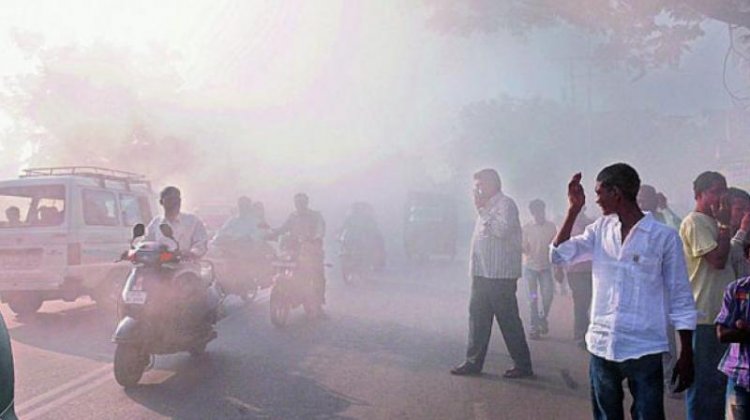Hyderabad, Bangalore And Chennai May Loose Out On GDP Over Air Pollution

There is a direct relation between air pollution and Gross Domestic Product (GDP), which is an important indicator of the economic performance of a nation. According to a study by the Centre for Research on Environment and Clean Air (CREA), IQAir Air Visual and Greenpeace Southeast Asia, health damage from air pollution caused between 0.4% and 6% of annual GDP in the world’s leading cities for the first half of 2020.
The same research also found that the estimated losses were between 4.1% and 6.6% for Indian cities from the beginning of this year until September first week. According to the study, this was majorly due to increased risks of chronic illnesses, asthma, work absences, preterm births and many other health impacts.
The different health impacts of air pollution affect the economy in different ways. For example, air pollution can cause breathing ailments in adults. This means not only the affected but also the immediate family members will have to take time off from work to accompany the affected member to a hospital or a doctor. It also means the family’s expenses incurred due to healthcare will increase while there is lesser economic productivity because they are unable to work.
CREA has worked with IQAir Air Visual and Greenpeace Southeast Asia to release an online tool that tracks the health impacts and economic costs of air pollution in the world’s cities in real time. The details of how this research assigned an economic cost to each type of health impact was based on existing studies assessing those costs.
The online tool uses air pollutant concentration data from AirVisual’s global database to track air pollution exposure in real time. While most of the health impacts are chronic, resulting from long-term exposure of pollutants we breathe in every day.
As per statistics from January 1 to September 4, 2020 the results reveal that out of the 28 cities included, New Delhi bore the highest cost of air pollution, amounting to 6.6% of its annual GDP.
Three north Indian cities and three south Indian cities were included in the research and it was found that the loss to GDP was found to be considerably higher in the north Indian cities. Delhi, Mumbai and Patna were included from north India and Hyderabad, Chennai and Bengaluru were part of the study from the south.
When asked whether there was any particular reason or criteria based on which these 6 cities were included in the study, Avinash Kumar Chanchal, a climate and energy campaigner with Greenpeace explained, “The tool has various cities across the world. In India, we predominantly chose metro cities while trying to maintain the balance between north west and south Indian cities to track the impact of air pollution.”
“We need a comprehensive, systemic and time-bound action to reduce the air pollution levels. If we don’t act, these south Indian cities are not too far from Delhi in terms of the health and economic impact. It’s evident that air pollution is a public health crisis not only in north Indian cities but also in south Indian cities”, added Avinash.
According to the research, lower respiratory infections and non-communicable diseases in Delhi have seen an increase often resulting in deaths. Due to illnesses, years of quality life is lost which means lesser productivity. The research revealed that over 4,000 new cases of asthma in children have been attributed to high levels of NO2 (nitrogen dioxide) pollution in New Delhi. This, in turn, has increased the number of children suffering from asthma.
While the air quality index has improved during the COVID- 19 related lockdown, pollution continues to be a serious public health crisis and also a threat to the economy.















































